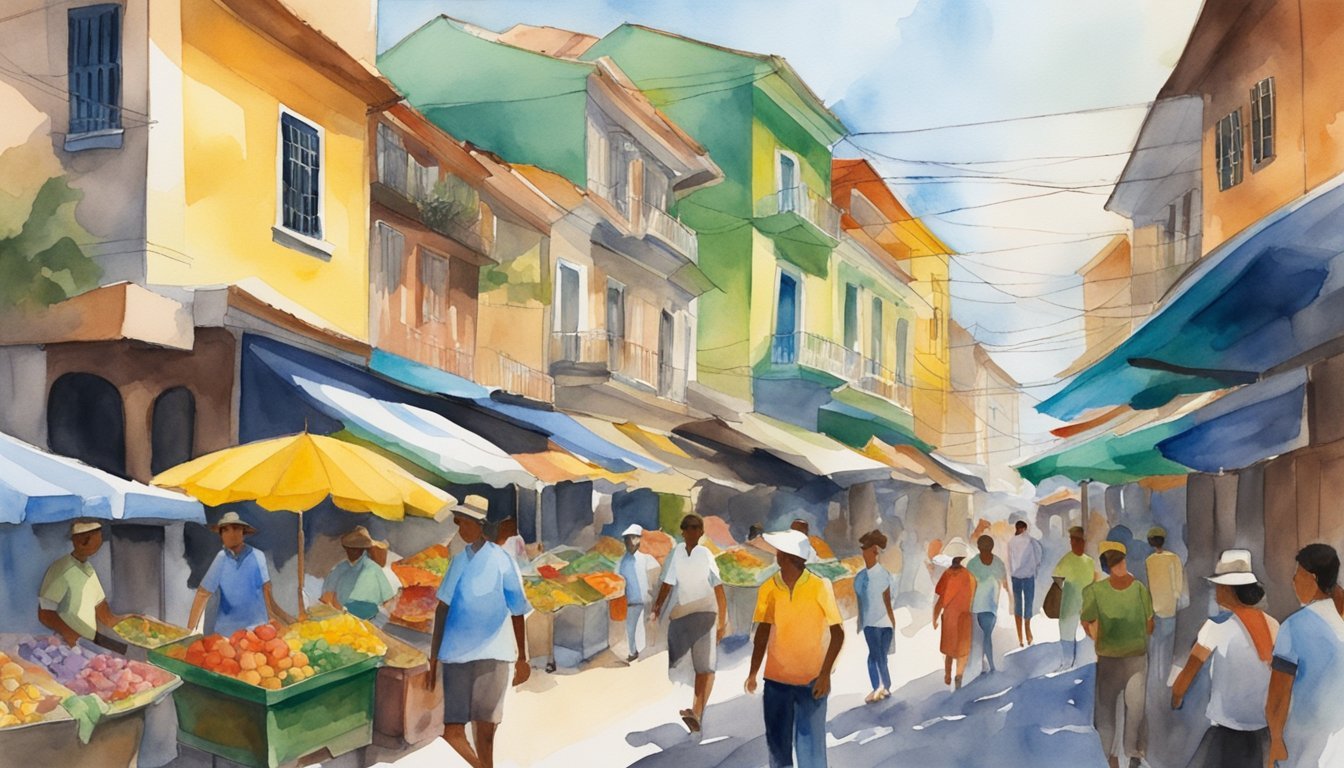Geography and Environment
Brazil’s vast geography encompasses the largest portion of South America and a rich tapestry of environmental features, from dense rainforests to diverse mountain ranges.
Physical Landscape
The Federative Republic of Brazil is a colossal entity in South America, flaunting an area of approximately 8.5 million square kilometers. This makes Brazil not only the fifth largest country in the world but also endows it with the longest coastline on the Atlantic Ocean, stretching over 7,400 kilometers. The country is geopolitically divided into 26 states, with the terrain widely varied across regions such as the lush Amazonas in the north, the mountainous regions of Rio Grande do Sul in the south, and the expansive wetlands of the Pantanal.
Significant mountain ranges in Brazil offer a stark contrast to its vast plains. Near Rio de Janeiro, peaks rise to a staggering altitude of 9,823 feet, while the central ranges near Goiânia reach heights of approximately 4,500 feet. These highlands are complemented by noteworthy rivers like the Amazon, Tocantins, and Paraná. The confluence of the Paraná and Uruguay rivers forms the second-largest river system in South America, the Rio de la Plata basin, which Brazil shares with Argentina and Paraguay.
Climate and Biodiversity
Brazil is a sanctuary of biodiversity, bolstered by climates that vary dramatically from tropical in the north to temperate in the south. The enormous Amazon basin, home to the vast Amazon rainforest, hosts an unparalleled variety of plant and animal species. This tropical climate gives rise to incredibly biodiverse ecosystems, including wetlands like the Pantanal.
The country’s environmental wealth extends beyond its forests, with some areas like Fernando de Noronha being recognized for their unique marine environments. The juxtaposition of different climatic conditions across its regions supports a diverse range of habitats for countless species. Brazil’s commitment to protecting its natural resources can be seen through initiatives to preserve forested areas, such as the significant portion of the Amazon within its borders and in territories like Acre, Roraima, and beyond.
How Can Informative Writing Enhance a Travel Guide Like Brazil’s?
Informative writing tips can transform a travel guide like Brazil’s into an engaging resource for travelers. By clearly outlining attractions, cultural insights, and practical advice, readers can gain a deeper understanding of their destinations. This approach not only captivates but also equips tourists to fully enjoy their Brazilian adventures.
Society and Economy

Brazil’s society is a vibrant tapestry of culture and history, while its economy is the largest in Latin America, reflecting a complex interplay between diverse social elements and economic drivers.
Population and Culture
Brazil’s population was recorded at approximately 218.7 million in 2023, making it the fifth most populous country in the world. The nation is a melting pot of ethnic groups, with a demographic composition that includes people of mixed European, African, and Indigenous ancestries. The influence of Portuguese culture is evident, as Brazil was a Portuguese colony until its independence in 1822, and Portuguese remains the official language. Significant cultural centers like Rio de Janeiro and São Paulo are also homes to vibrant communities representing various global ethnicities, including those of Spanish and German descent. The cultural landscape is further enriched by a variety of religious beliefs and practices.
Political Structure and Economy
Brazil operates as a federal republic, composed of the federal government, 26 states, plus the Federal District of Brasília, which serves as the nation’s capital. The political system is divided into the executive, led by the President and Vice President, the legislative, which includes the National Congress, Federal Senate, and the Chamber of Deputies, and the judiciary.
Economically, Brazil has a GDP of about $1.6 trillion, with its currency being the Brazilian Real (BRL). The country’s economy is diverse, including agriculture, mining, manufacturing, and services. Brazil is renowned for the Amazon rainforest and significant reserves of water, contributing to its environmental and economic profile. The country’s economic path has been influenced by factors such as corruption and crime, but also by periods of substantial growth and reform. Notably, Brazil’s economy faces challenges such as economic inequality and the need for continuous reform to sustain growth and development.

